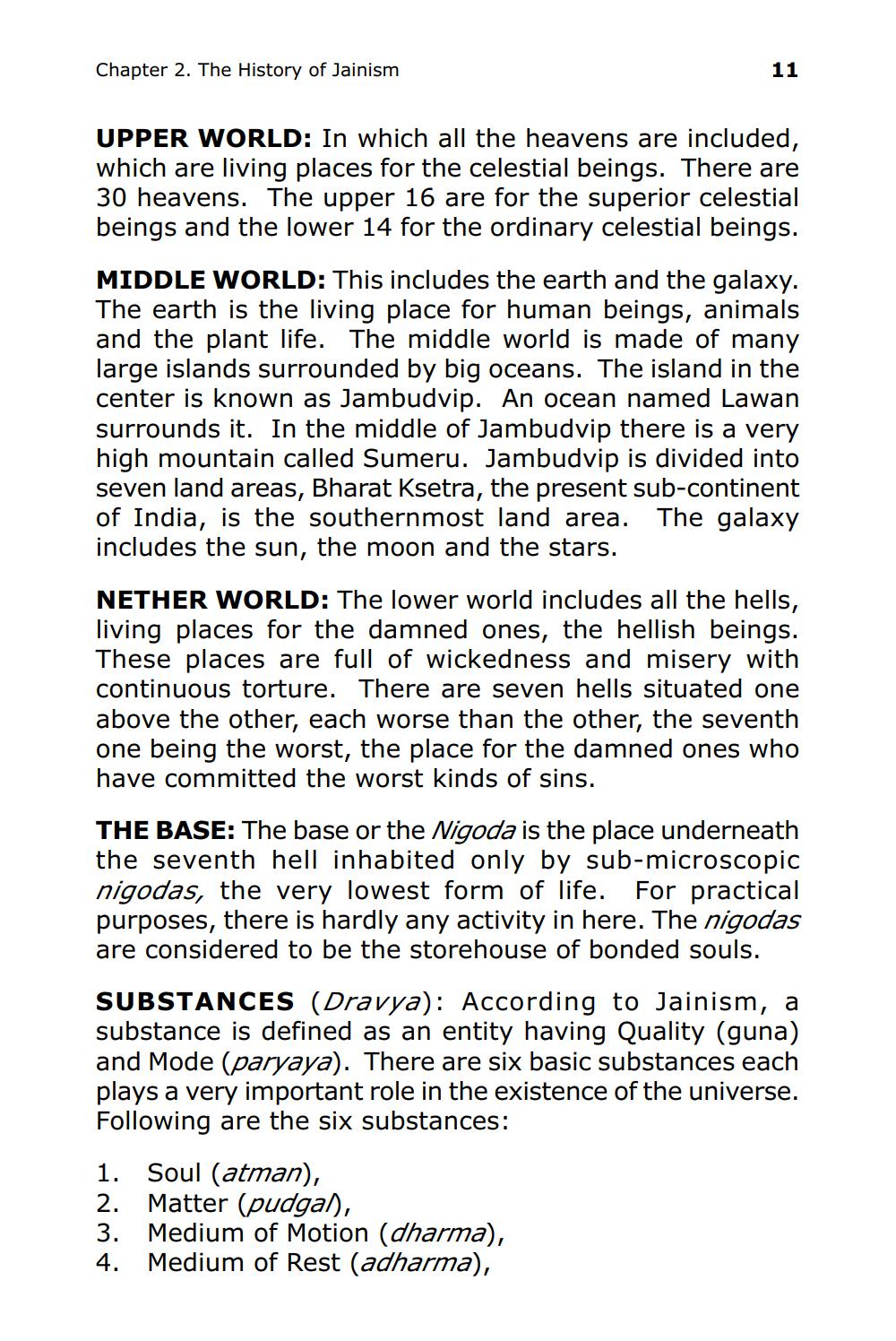________________
Chapter 2. The History of Jainism
11
UPPER WORLD: In which all the heavens are included, which are living places for the celestial beings. There are 30 heavens. The upper 16 are for the superior celestial beings and the lower 14 for the ordinary celestial beings.
MIDDLE WORLD: This includes the earth and the galaxy. The earth is the living place for human beings, animals and the plant life. The middle world is made of many large islands surrounded by big oceans. The island in the center is known as Jambudvip. An ocean named Lawan surrounds it. In the middle of Jambudvip there is a very high mountain called Sumeru. Jambudvip is divided into seven land areas, Bharat Ksetra, the present sub-continent of India, is the southernmost land area. The galaxy includes the sun, the moon and the stars.
NETHER WORLD: The lower world includes all the hells, living places for the damned ones, the hellish beings. These places are full of wickedness and misery with continuous torture. There are seven hells situated one above the other, each worse than the other, the seventh one being the worst, the place for the damned ones who have committed the worst kinds of sins.
THE BASE: The base or the Nigoda is the place underneath the seventh hell inhabited only by sub-microscopic nigodas, the very lowest form of life. For practical purposes, there is hardly any activity in here. The nigodas are considered to be the storehouse of bonded souls. SUBSTANCES (Dravya): According to Jainism, a substance is defined as an entity having Quality (guna) and Mode (paryaya). There are six basic substances each plays a very important role in the existence of the universe. Following are the six substances: 1. Soul (atman), 2. Matter (pudgal), 3. Medium of Motion (dharma), 4. Medium of Rest (adharma),




